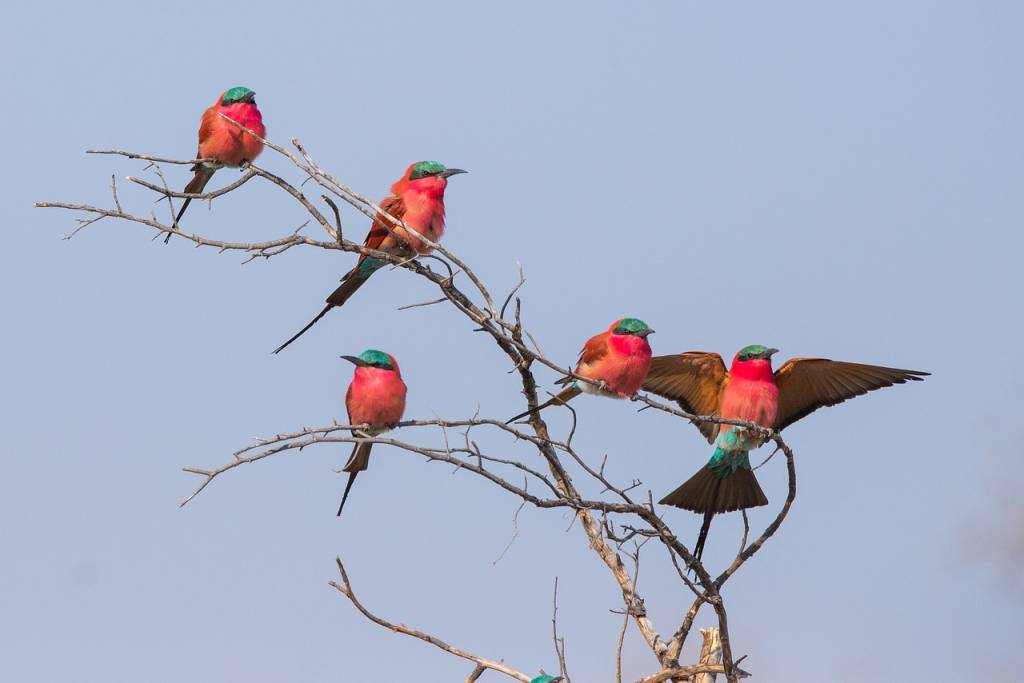
Four off-the-grid Places You Need to Visit on Your Road Trip Through Botswana
While the Chobe River, Central Kalahari Game Reserve, and the Okavango Delta are the most...
 25 October 2024
25 October 2024 
There is no such thing as a stupid question. In fact, we receive plenty of FAQs each month, either based on the destinations we post on our blog or the type of vehicles we offer for these self-drive adventures. These can vary from what to pack on safari, which destinations require anti-malaria medication, or whether there are vegetarian options at any of the lodges or camps included in your itinerary.
To create some order in all of this, we’ve selected five FAQs that we hope will shed some light on what you can expect from a self-drive Botswana safari. Read on to learn more.

People often compare the annual zebra migration in Botswana to the famous Wildebeest Migration in Tanzania and southern Kenya. However, these spectacles really can’t be compared. Let’s start with a brief overview of the zebra migration.
Little researched, and almost unnoticed for decades, the zebra migration was only quite recently declared as a second African migration due to the fact that the pathways these animals take were historically inaccessible to people. However, recent studies have established that the Botswana zebra migration is the longest African migration, while the Great Migration involves the most animals.
Scientists measured the zebra migration to span a distance of 10 000 km, a much further distance for these zebras and accompanying plains game travel compared to the Great Migration in the Serengeti and Maasai Mara. Seasonal movements involve three distinct groups of animals. During the dry months, these groups begin their journey from the Chobe River, Moremi Game Reserve and the Kwando-Linyanti wetlands respectively. These groups then move towards the Nxai and Makgadikgadi Pans during the wetter season.
The first study conducted about this migration involved the group that moved from the Chobe to the Nxai pans. Taking about 80 days in total, this herd begins their journey during the dry season of July to October. The return journey begins during the wetter season from November to March. The Makgadikgadi zebra migration also follows the same seasonal pattern, although they take a different route.
So is this migration worth traveling to Botswana for? This depends on the season you’d like to travel in. The green season between November and end of March offers lower rates and fewer crowds compared to the high season. Knowing this, it is easier to plan your trip to a particular park or reserve that you’d be most likely to witness this spectacle that offers great wildlife interaction during the low season.

Botswana is made up of intriguing landscapes that offer a unique experience depending on the region you visit. Most safari lodges and camps offer two safari activities per day, either day or night game drives or walking safaris (this will depend on whether you are staying in a private game reserve or a national park).
Activities that fall outside your itinerary will carry an additional cost (such as horseback riding, hot air ballooning, etc). However, many lodges and camps allow you to “swap out” one activity for another.
Cultural and historical excursions are also available in heritage-rich areas like the Central Kalahari Game Reserve. The waterways, rivers, and marshlands of the Okavango Delta, Chobe River, and Kwando-Linyanti wetlands offer a variety of water-based activities, too.
This is a relaxing way to view the intricate watery wilderness of Botswana. A traditional, dugout canoe is paddled by a professional safari guide.
This is a great, relaxing and somewhat whimsical way to enjoy the unique sunsets in Botswana, with a cocktail or glass of wine at hand.
Some lodges offer this activity during certain times of the year. Many reserves limit this activity to prevent overfishing and disrupting the breeding cycle of the fish. However, this is a highly recommended activity, both for the thrill of a big catch and for the game viewing from the vantage point of the river.

There are a variety of safari packages available that transverse up to three countries, but this will be determined by the season you travel in, as well as your budget. You can tailor-make your safari to include any destination, or simply plan your own trip and drive from point to point. We recommend sticking to surrounding countries of Botswana like Namibia, South Africa, and Zimbabwe. One comment we often hear is the regret that one didn’t travel to Victoria Falls after their Botswana safari.
Make sure you use our Botswana Border Post Crossing Guide before you set off!

While southern Botswana has a lower risk of malaria, it is still recommended that you take anti-malaria medication no matter where you visit. You can use this useful map to see malaria danger levels in Botswana.
Mobile SIM cards will work anywhere in the world provided that you have an international roaming contract. This will be costly, however. We recommend using a local service provider to reduce roaming costs. There are three main service providers in Botswana, all of which offer similar services, with the only difference being the coverage range.
You only require a passport to purchase a SIM and there are outlets available everywhere, from retail stores to corner shops. Please make sure that you test your new SIM card before leaving the store as some dealers sell fake SIM cards. Please note that some remote areas in Botswana have no coverage ranges and will require a suitable vehicle for the drive.
We hope you found this article useful, especially if you’re planning to head out on a self-drive safari in Botswana. After all, what’s a trip to southern Africa without experiencing the magic of the Okavango Delta or the remarkable zebra migration across the Makgadikgadi? If you’re ready to plan your trip, check out our extensive range of camping-equipped 4x4s on offer in Botswana.